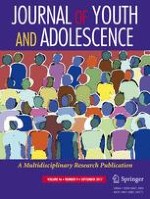20-02-2017 | Empirical Research
Neighborhood Moderation of Sensation Seeking Effects on Adolescent Substance Use Initiation
Gepubliceerd in: Journal of Youth and Adolescence | Uitgave 9/2017
Log in om toegang te krijgenAbstract
Adolescent substance use carries a considerable public health burden, and early initiation into use is especially problematic. Research has shown that trait sensation seeking increases risk for substance use initiation, but less is known about contextual factors that can potentially unmask this risk. This study utilized a diverse longitudinal subsample of youth (N = 454) from a larger study of familial alcoholism (53.1% female, 61% non-Hispanic Caucasian, 27.8% Hispanic, 11.2% other ethnicity). Study questions examined sensation seeking in early adolescence (mean age = 12.16) and its relations with later substance use initiation (mean age = 15.69), and tested whether neighborhood disadvantage moderated sensation seeking’s effects on initiation of alcohol, tobacco, and marijuana use. Neighborhood disadvantage significantly moderated the relation between sensation seeking and all three forms of substance use. For the most part, sensation seeking effects were weakened as neighborhood disadvantage increased, with the most advantaged neighborhoods exhibiting the strongest link between sensation seeking and substance use initiation. These results highlight the importance of focusing on relatively advantaged areas as potentially risky environments for the sensation seeking pathway to substance use.
